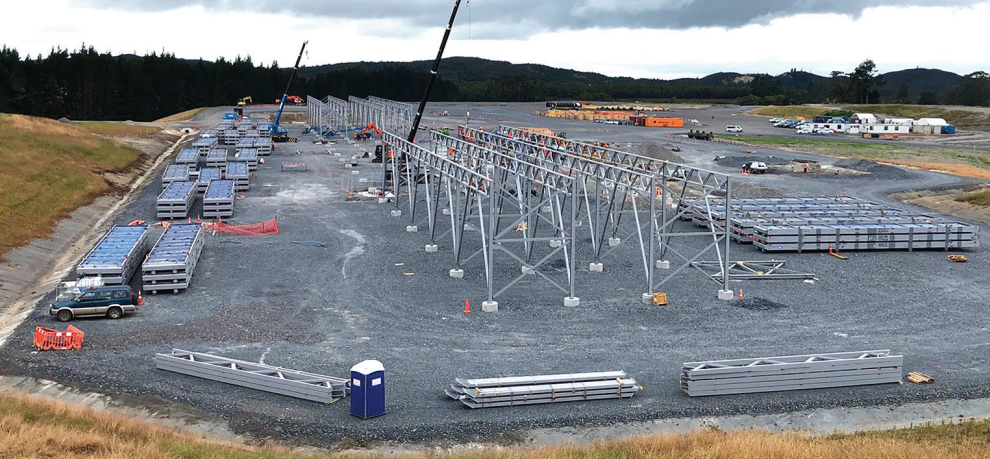Ngawha geothermal power project in New Zealand progressing
With the control room ready, heat exchanger and other equipment on site, construction continues for the 28 MW expansion of the Ngawha geothermal power plant by Top Energy in New Zealand.
The Ngawha geothermal power project in New Zealand is making good progress, as reported by the developer Top Energy in its December 2019 newsletter. With the project the company is expanding the existing 25 MW Ngawha geothermal plant to 53 MW capacity by June 2021.
After two years of drilling wells and moving soil tangible assets are appearing above the ground. Civil enabling works are now largely complete with all internal roadways and pipeline routes formed, and the last of the major stormwater pipelines now in place. The new control centre building has been completed and representatives from Ngawha Marae performed a blessing ceremony at dawn on 7 December. The building is now ready for the operating crew to move in.
The power station structures are starting to appear above the ground, with the first being the air-cooled condenser (the large bank of radiators and fans that can be seen at the existing stations). Installing the foundations for the heat exchangers and electrical buildings are well underway. Geothermal fluid pipelines are being installed on the pipe supports which will eventually run from the production wells to the power station and then from the power station to the injection wells, a total distance of nearly 3km. Civil works at the Ngawha substation are nearing completion as are the installation of poles for the transmission line to Kaikohe. We often have over 100 people working across the site.
The next few months will see installation of mechanical power station and geothermal fluid pipeline equipment get in to full swing. Electrical work at the substation and stringing of the transmission line will occur early in the New Year.
In December, local news reported on the transport of the 90-ton, 20.5 m heat exchanger and the challenges.
Source: Top Energy


















